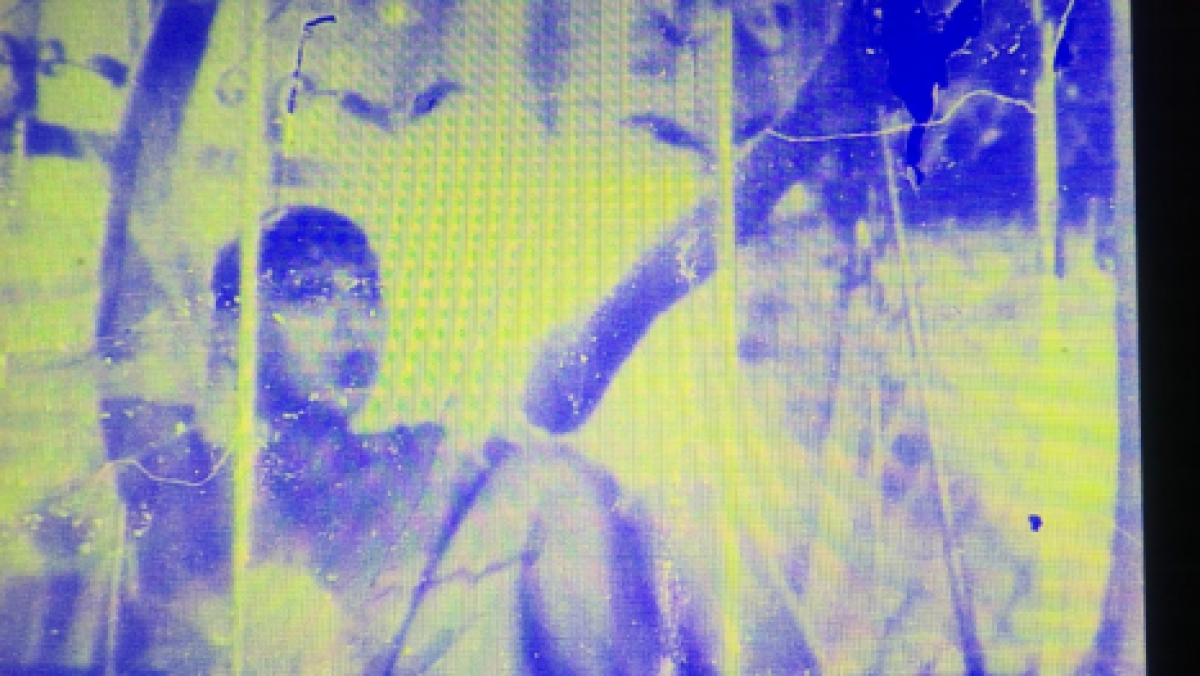Esery Mondesir
Haitian-born, Toronto-based Esery Mondesir’s films draw from collective memory, official archives, vernacular records, and the everyday to explore migration
and exile.

Still from Mondesir, Josephine (2020), courtesy of the artist
Taking a critical stance on modern-day sociopolitical and cultural phenomena, from the margins, artist-filmmaker Esery Mondesir worked as a high school teacher, a book designer, and a labour organizer, before getting an MFA in cinema production from York University (Toronto) in 2017. Motivated by his own diasporic experience, Mondesir’s films draw from collective memory, official archives, vernacular records, and the everyday to explore migration and exile as sites of identity formation as well as cultural resistance.
AGO: What was the inspiration for this artwork or series?
Mondesir: Josephine appropriates and repurposes a scene from Zouzou, a 1934 French musical film by Marc Allégret featuring American-born dancer, singer, actor and activist Josephine Baker (1906-1975). Born in Missouri, where she worked as a child domestique, Josephine Baker left her racially segregated homeland to pursue her dream for freedom and self-actualization in Paris, France. Her almost-naked first performance at La Revue Nègre in 1925 set her off for success in a well-intentioned, racist and condescending environment, thirsting for exoticism but from which a certain renaissance of Black art would emerge. In 1934, the last year of the American occupation of Haiti, Josephine Baker is one of the two main characters in Allégret's film Zouzou, in which she sings a nostalgic song called Haiti, saying "who will give me back my country, Haiti''. The unsynchronized soundtrack of Josephine, however, is an interpretation of the same song by contemporary French-American Grammy winner Jazz musician and singer Cecile McLorin Salvant (whose father is Haitian). The video clips were gleaned from YouTube, then reshot using a 16mm film camera. The film was then hand processed and digitally coloured. I think of this piece as a conversation between two black women around what it would mean to create a (new) modernity that would center justice, freedom and self determinacy for all.
AGO: Tell us about a place or a space where you most love making your work?
Mondesir: My practice is fundamentally community-based. In the past, that had required me to work in small communities in Havana, Cuba and Tijuana, Mexico, alongside fellow Haitian exiles. I love working that way. These collaborators and I always foment some sort of connivance that makes the work so much more enjoyable and fulfilling.
AGO: Are you in dialogue with any other artists or creative peers about your practice? If so, how does this dialogue feed your work?
Mondesir: The material experimentations with the photographic medium in Sandra Brewster's work speak to me at the visceral level. Conceptually, I’m compelled by the ideas of trace, memory and presence manifest in Brewster’s work, especially in a series like Token | Contemporary Ongoing that was exhibited at A Space Gallery in Toronto, last year.
In the U.S., artist-filmmaker Kevin Jerome Everson's commitment to investigating the everyday life of African-Americans has been an inspiration to my community-based work. His aesthetic rigour — in works such as “Fe26” (2014), Tonsler Park (2017) -- is a testimony to the power of the artistic voice in "speaking nearby" a community, to use Trinh T. Minh-ha's motto.
Follow Esery @gadepabouleje
